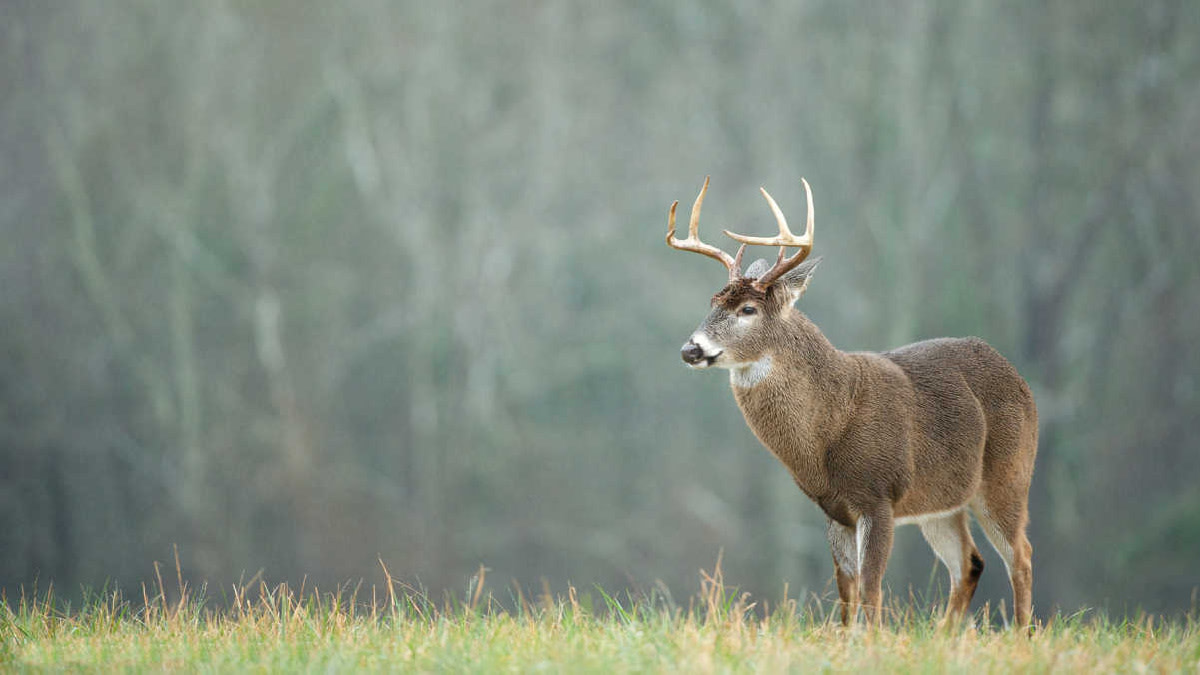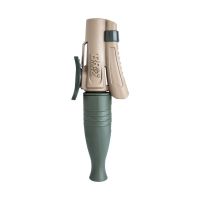
Here’s the very most important thing you need to know about the 2021 rutting moon: It might not matter at all. It might be a load of hogwash. It might be a steaming pile of good ol' deer camp mythology. Or it might not.
As my pal Spencer Neuharth likes to say, the rutting moon is kind of like Sasquatch. No one can really prove it exists, but it’s fun as hell to hear stories about it, and you can’t help but be curious. A heck of a lot of hunters believe in it, including some who have studied it rather closely and claim to have used it to their benefit. But that’s about the extent of the evidence.
Nonetheless, with a sense of curiosity and intrigue, let’s dive into what the rutting moon theory implies and how this might or might not influence a recommended hunting strategy.
The Conventional Wisdom Before we get into the rutting moon, we need to briefly touch on the conventional wisdom surrounding this topic. In short, most studies point to the timing of whitetail breeding being linked to changes in daylight in a 24-hour period. The amount of time each day that an organism receives illumination is known as a photoperiod, and physiological responses by animals to time spent in light or dark is known as photoperiodism. As the time of daylight shrinks leading into the fall, testosterone and estrogen levels in deer rise correspondingly, eventually leading to a threshold that triggers breeding activity.
This leads to a relatively consistent peak breeding period, proven in numerous research projects, that tends to fall somewhere in mid-November for the much of the United States (with some outliers in the South).
With peak breeding typically happening in mid-November, peak rutting activity (rubbing, scraping, seeking, chasing, fighting) usually ramps up in the two to three weeks prior. So conventional wisdom points to peak rut action occurring somewhere during those first couple weeks of November, with outside factors such as weather conditions or hunting pressure likely impacting how much of that activity is visible during the daylight.
This is the most widely accepted view of the topic. But what fun is it to only explore the conventional?
The Rutting Moon Theory The Rutting Moon Theory was popularized several decades ago by the late Charles Alsheimer and wildlife biologist Wayne Laroche and has maintained relevancy ever since. Through the annual publication of Alsheimer’s predictions and recommendations in Deer & Deer Hunting Magazine, the theory lives on. The idea which originated from a number of studies (non-peer reviewed) and anecdotal evidence collected by Alsheimer and Laroche, is that the moon acts as a pseudo-starting pistol for rutting activity.
Specifically, the second full moon after the autumn equinox is believed to be what gets things firing on all cylinders. While some challenge these assertions, plenty still point to clues that suggest otherwise. Per the Deer & Deer Hunting 2021 Whitetail Calendar, describing an updated view on these rut predictions, “The fact moonlight changes the Earth’s illumination on a cycle similar to the whitetail’s 28-day estrous cycle, the fact whitetails have a sensory system that can detect moonlight, and the fact the whitetail’s endocrine system responds to light stimuli by altering levels of reproductive hormones argue against coincidence.”
The 2021 Rutting Moon In 2021 we have an interesting situation as the fall equinox is on September 22, just three days after the prior full moon. This means that technically the second full moon after the autumn equinox doesn’t land until November 19th. This is later than usual, so what we potentially have here is what Alsheimer has previously referred to as a “trickle rut”. Because this “rutting moon” date is so much later than the typical peak rutting period you may have deer triggering off of two different full moons.
Some deer might trigger off the full moon on October 20 leading to earlier than usual rutting activity, while others might trigger later than usual around November 19. Neither of these nicely line up with that natural hormonal rise during the first two weeks of November.
Alsheimer’s perspective historically was that this leads to rutting activity that rises and falls over a longer time period, making a less noticeable, more scattered, and generally less frenzied rut. Essentially, a trickle.
My Take Does any of this really matter? I don’t know. I realize that’s not what you want to read, but it’s the reality of it. And it’s honestly the reality of the situation for any “whitetail expert” out there telling you otherwise. The rut is a mysterious thing. And even though a myriad of quality studies have pointed toward consistent photo-period induced peak breeding dates, we all know that the rutting activity we actually see is almost never consistent. I’ve seen wild rut activity on October 23 and I’ve seen it on November 26 and even on December 9.
There’s a lot going on in the world of whitetails and I think we can be forgiven for not understanding it all. And thank God we don’t, because where would the fun be in that?
So, here’s how I make sense of things. I put most of my faith in facts proven by the best science out there; that most breeding is happening somewhere in the middle of November and that the majority of seeking, chasing, and all of that fun stuff will likely happen in the weeks surrounding it. I also know that outside factors like the temperature, precipitation, food source availability, hunting pressure, and maybe even the moon, might impact just how frenzied that activity is and how much of it happens in daylight.
I can’t control most of that. But I can control one thing: When November hits, I’m spending every spare moment I can in the tree. Those magical days of the rut can happen at any time, regardless of what any calendar, moon chart, or forecast tells me. I’m not taking any chances on missing it.
Feature image via Matt Hansen.





